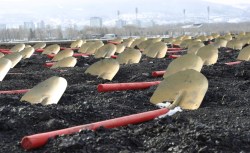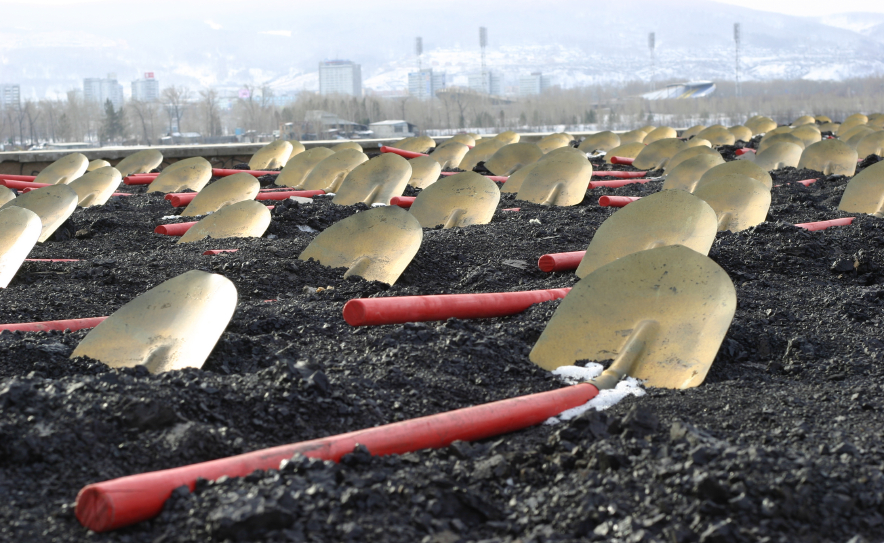 Imagine my alarm when I read this headline in The Christian Science Monitor: “Study: EPA regulations squelch US coal industry.” This is a very popular attack from conservatives, including Mitt Romney, but I’ve never seen a reputable study that supports it. Could I have been wrong all along?
Imagine my alarm when I read this headline in The Christian Science Monitor: “Study: EPA regulations squelch US coal industry.” This is a very popular attack from conservatives, including Mitt Romney, but I’ve never seen a reputable study that supports it. Could I have been wrong all along?
The story, from “guest blogger” Charles Kennedy, refers to a report [PDF] from the research consultancy Brattle Group. So I went and read the report. And it doesn’t say what Kennedy says it says. At all. In fact, it says something close to the opposite.
I know lots of websites (including Grist!) allow “guest bloggers” to repost stuff. But I think of The Christian Science Monitor as something of an institution. It’s disappointing to find misleading dreck on its site. Do I have to squint at the small print before I can trust an article on CSM now? Is there no editing? You kids get off my lawn!
Anyway. Let’s look at what the Brattle Group did say, which is quite interesting.
The report is an update of its brief from late 2010 on potential coal-plant retirements. The headline news: Brattle is substantially upping its projection of how many coal plants will retire, by about 25 GW. That’s huge. But it’s not happening because of EPA regulations. In fact, say the authors, the change is “primarily due to changing market conditions, not environmental rule revisions, which have trended towards more lenient requirements and schedules” (my emphasis).
Catch that? Relative to the situation in 2010, EPA regulations look like less of a threat. The agency’s new Cross-State Air Pollution Rule (CSAPR) and Mercury and Air Toxics Standards (MATS) were finalized with “less restrictive requirements on the compliance deadlines and equipment than previously predicted.” The new rule on cooling towers turned out to be less stringent than industry feared as well. CSAPR was scheduled to go into effect in 2012, but was recently struck down by a federal court. (It’s uncertain whether it will eventually be upheld, altered, or replaced.)
Long story short, the regulatory climate for coal is slightly more favorable than expected two years ago. But it doesn’t matter, because “market conditions” are kicking coal’s ass anyway.
One market condition has to do with demand for power, which has slowed/plateaued due to the recession and recent mild weather. Another is the falling price of renewables. But the big one, the cudgel to coal’s head, is natural gas prices. You will recall that in April, natural gas generation equaled coal generation in the U.S. (at 32 percent each) for the first time since the Energy Information Administration started keeping records. Utilities are cranking natural gas up and retiring coal plants, mainly for economic reasons. Nick Akins, president and CEO of the coal-heavy utility American Electric Power, has said flat out that “there will not be any new coal plants built, with the current price of gas and the forecast for the future for gas.”
So what can we expect for coal-plant retirements given these market conditions? First, here’s where we stand, according to Brattle: “As of July 2012, approximately 30 GW of coal plant capacity (roughly 10% of total coal capacity) had announced plans to retire by 2016.” That’s already a lot. To determine how much more is in the offing, Brattle had to estimate two crucial variables: first, what natural gas prices will do, and second, how strict EPA regulations will end up being. So they ran scenarios for both high and low gas prices, and for both “strict” and “lenient” regulatory environments.
The result: “We find that 59 GW to 77 GW of coal plant capacity are likely to retire instead of retrofit with environmental equipment” (my emphasis). That’s 20 to 25 percent of U.S. coal generation capacity, in a matter of less than a decade. It’s an extraordinary shift — far bigger than anything the EPA could engineer — and it’s an unqualified good for public health and the fight against climate change. It would be great if outlets like The Christian Science Monitor could report it accurately, or at least find a “guest blogger” who can.
—-
BONUS MUSING:
It’s worth adding that I am even more bearish on coal than Brattle. One big X factor is the second half of EPA’s carbon dioxide regulations. The first rule covered new plants; the second rule, which EPA will hash out in the next few years, will affect existing coal plants. It could be anything from a nuisance to a nuclear bomb, depending on how strict the agency decides to make it. If Lisa Jackson is feeling frisky, and Obama doesn’t undercut her (again), it could actually create a regulatory climate actively hostile to coal — and give the industry something worth complaining about.
I also expect that electricity demand will not rebound as fast as conventional forecasts say. Slowing demand is about more than the recession, it’s about enduring structural shifts in the economy. I should probably write a separate post about that.
Also, I expect that the anti-coal movement — which continues to fly beneath the radar of most reporters, for reasons I cannot divine — will continue accomplishing great things.
And finally, there’s the possibility of substantial new support for clean energy and/or some sort of price on carbon. Their chances seem remote now, and I certainly don’t expect them by 2016, but … by 2020? Well, 2020 is a long way away. We can’t stay stupid about climate change forever.



